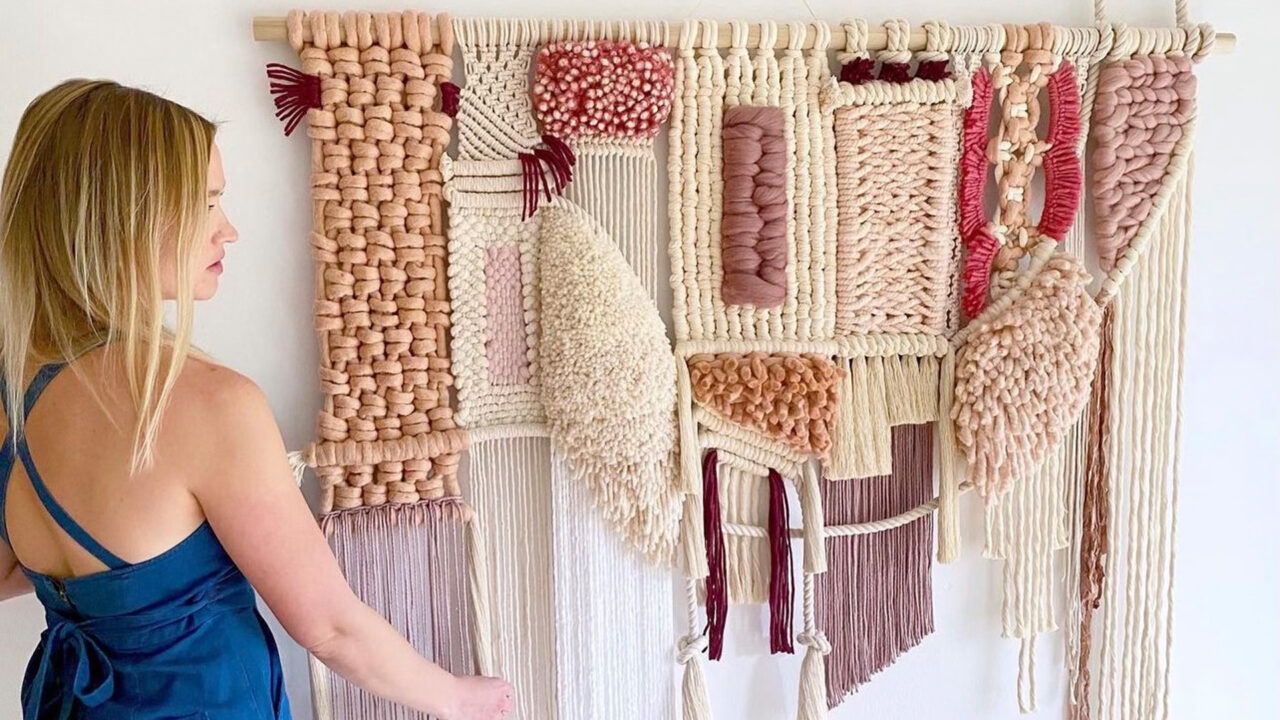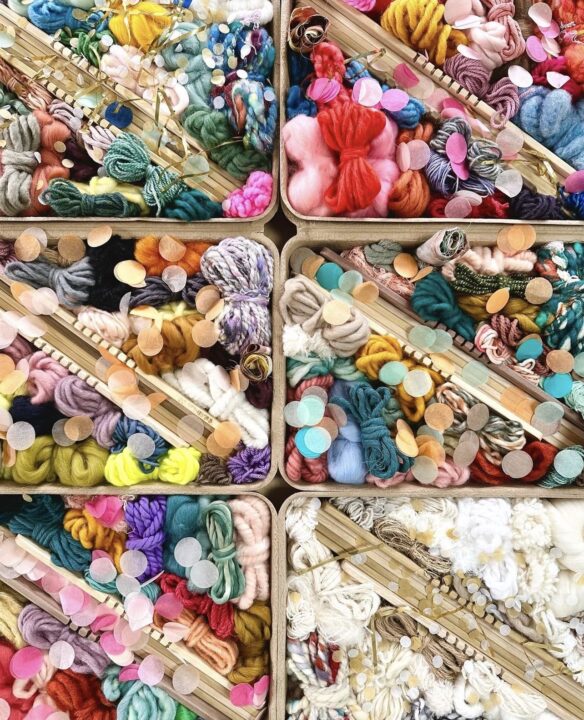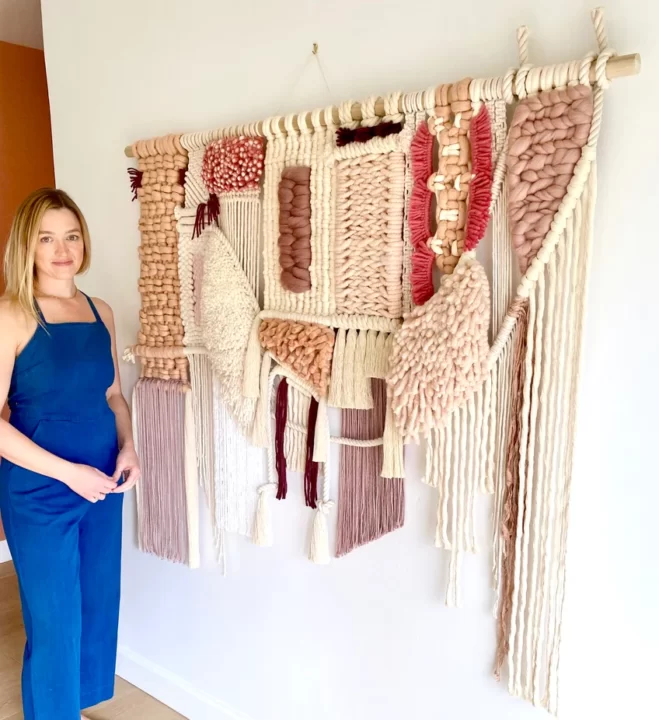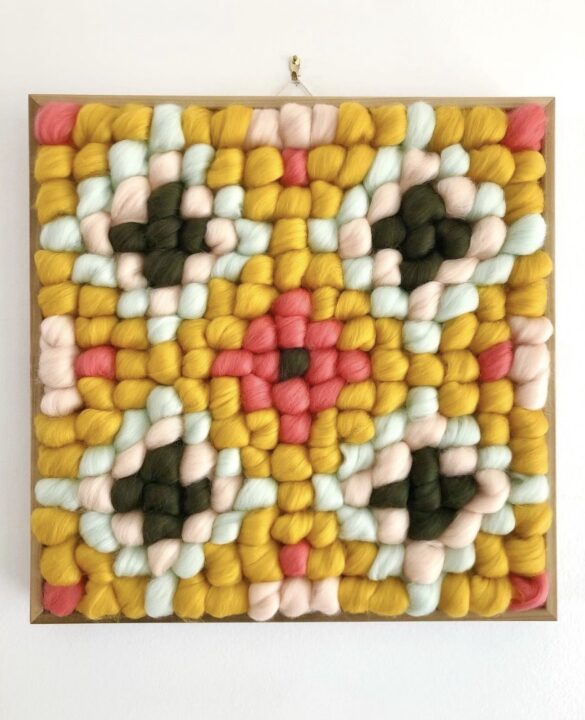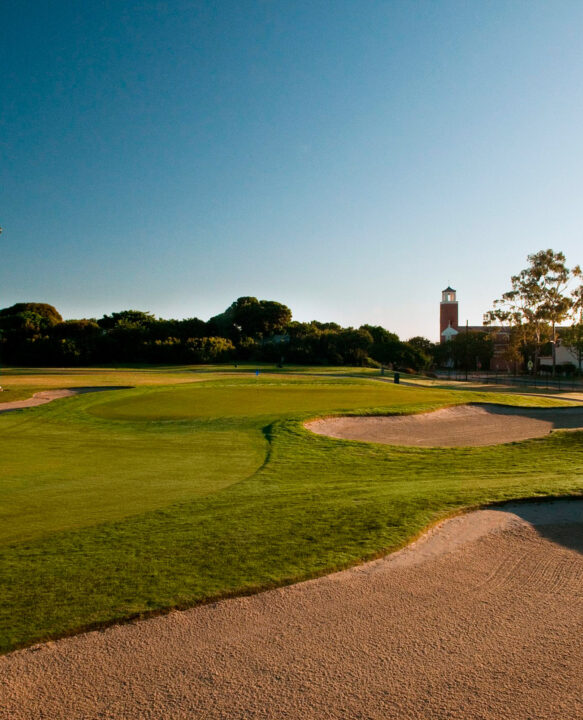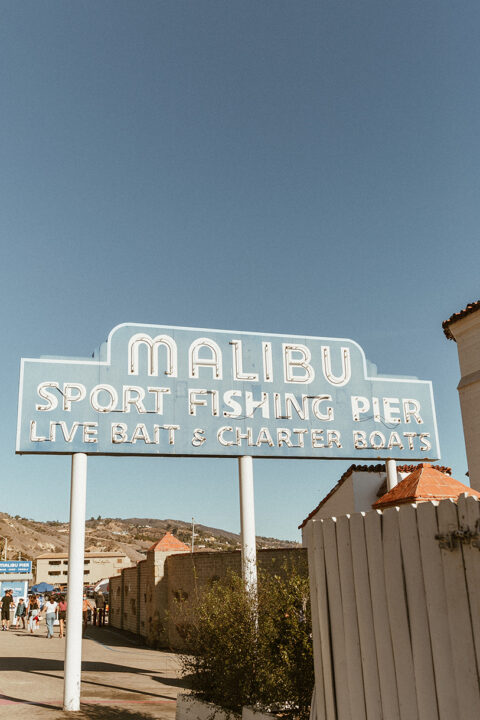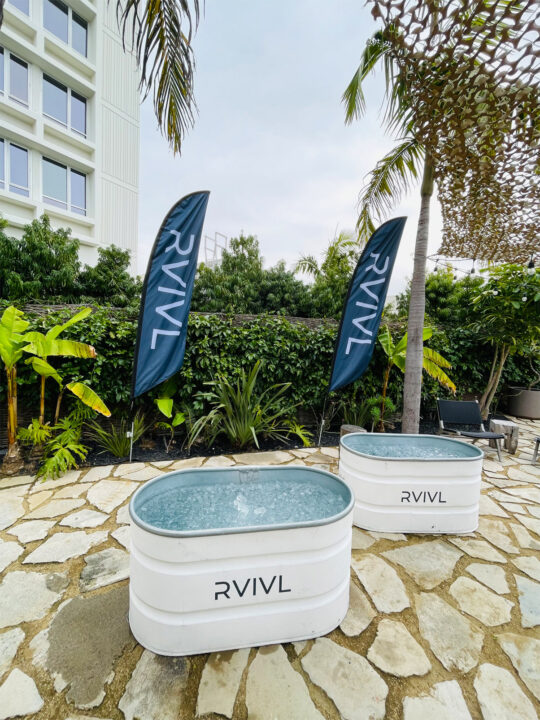Meet: Fiber Artist Meg Spitzer
This spring, we were thrilled to host Los Angeles-based fiber artist Meg Spitzer for a duo of textile workshops at Hotel June’s Caravan Swim Club. Using basic weaving and cross stitch techniques, Meg guided guests through the process of creating their own artfully woven tapestries, all from 100% recycled and repurposed materials. As we reflected on the inspiring afternoon, we caught up with Meg to learn more about her inspirations, journey to fiber art, and ongoing workshops through Venice’s These Hands Maker’s Collective.
Tell us about yourself!
I moved to Los Angeles from Brooklyn almost seven years ago. I’ve been an artist since before I could walk, but my mediums of interest shifted over time. I studied Digital Arts and wanted to be an TV editor, but realized pretty quickly that art created on a computer didn’t spark the same feelings in me as studio art. I am the truest version of myself while consistently creating.
How did you discover fiber art?
We didn’t have any fiber or textile art classes offered to us in school — until a few years ago I honestly couldn’t even have told you what it was! When my daughter was born I wanted to hang something soft over her crib, so I started researching macrame and tapestries and felt a spark. After my mom gifted me a macrame wall hanging kit, I was hooked. This led to following different artists, which led to books, which led to weaving and taking classes and so on… the obsession continues today.
Walk us through your creative process and how you source your materials.
A lot of the pieces I create come from a desire to showcase the materials themselves. In the past few years I’ve gravitated toward more sustainable materials like secondhand yarns or repurposed scraps. It’s not unusual to see a yarn from a fellow fiber artist’s destash sale in one of my pieces—I’d rather use it to create something new than throw it out. If a fiber scrap is long enough for me to tie a knot into, I’ll use it in a scrap piece…and if it’s too short, I send it off to have it spun into new yarn. It’s fun to get to work with scrap yarns; it’s an organic collaboration with another artist and a true full circle moment.
How do you incorporate inspiration from your surroundings into your creations?
I’m generally the most inspired by architectural shapes and uniquely beautiful color combinations. I’m especially drawn to pinks, greens, and warm colors that draw you in…like the lobby of Hotel June! I knew as soon as I walked in that I was in the right place.
Last month, you brought the Weaving “Party Rolls” Workshop to Hotel June. What goes into making these mini tapestries?
Party Rolls were born from leftover fibers I had accumulated from various projects and larger tapestries. I had a huge mountain of scraps that I sectioned off into various color combinations, realizing I had just enough to make a “bookmark” piece with each. Because of the small size, they could be made quickly while still being a one-of-a-kind “party” of its own. I started rolling them up and giving them to friends: “Party Rolls” were born.
Around this time Denise Ambrosi from These Hands Collective reached out about teaching a Party Roll class — it’s really fun because as soon as everyone realizes they can do whatever they want (and they can’t really mess it up), imagination and intuition takes over. My favorite part is watching students take off on their own, try something crazy, or get inspiration from their neighbor…learning to weave in this kind of environment is the absolute best.
It was also fun to experience the Squish Squares Workshop on the following day. What are Squish Squares and what goes into their creation?
Squish Squares came from wanting to use wool roving in a unique way. It’s so fun and soothing to work with, but is done the same way over and over again in weavings.
The process for the class starts with selecting a pattern and palette, then making sure you have enough roving to complete the whole square. Once this is done, the fun part is the cross stitching motion…it’s the same technique throughout so once you get the hang of it, you can zone out and just enjoy the process!
What are your tips for beginners in fiber art?
Practice, stay curious, listen to your gut, and experiment. I waited for almost a year to start selling pieces because I wanted to develop my own voice and style. When you’re first starting out, it’s easy to copy what’s already been done, but personally I think this is okay (as long as you don’t sell it) because it’s a great way to learn different techniques and what works for you. Following your intuition is the only way to find out what’s next for you; I’ve probably learned the most from failed experiments.
What are you hoping to create next? Any new mediums you’re looking to explore?
I would love to try tufting someday! And latch hooking, knitting, and crochet. The list is endless, but I love the idea of learning new techniques and incorporating them into my work somehow.
Find upcoming workshops with Meg Spitzer and other local artists at https://thesehandscollective.com/pages/workshop-calendar


